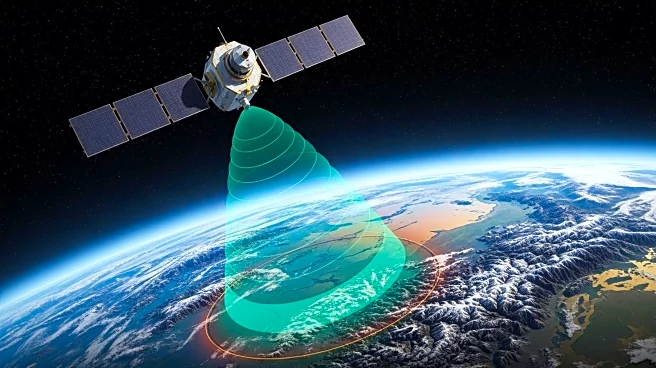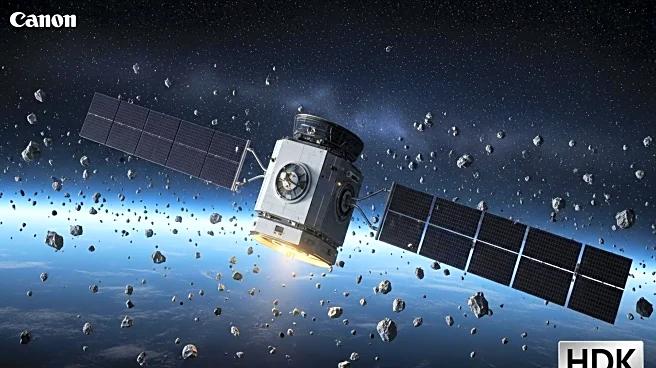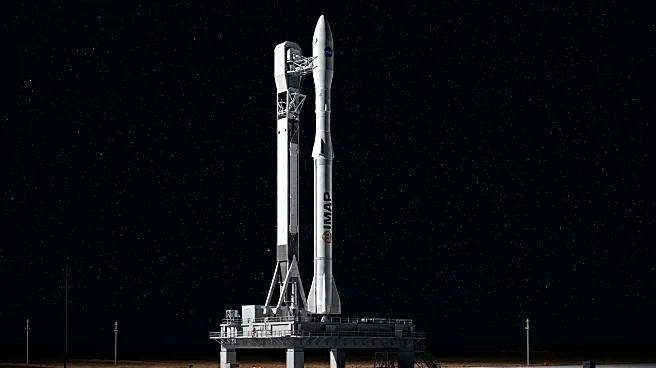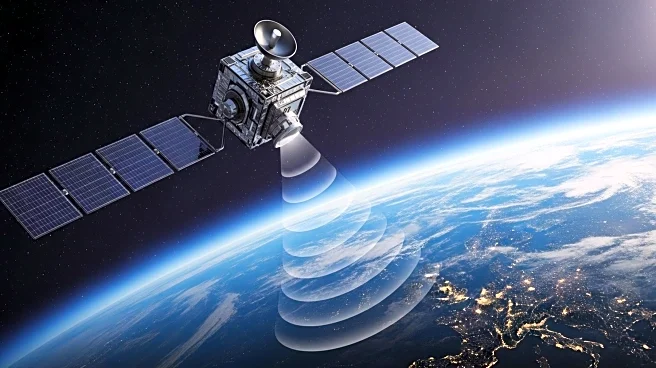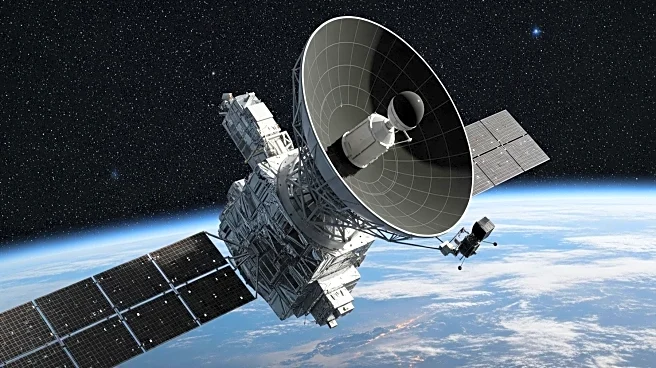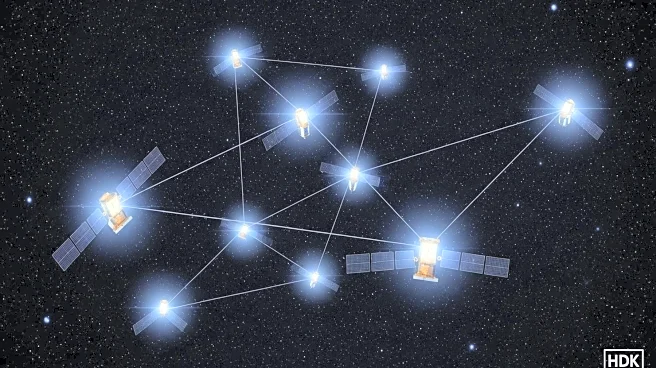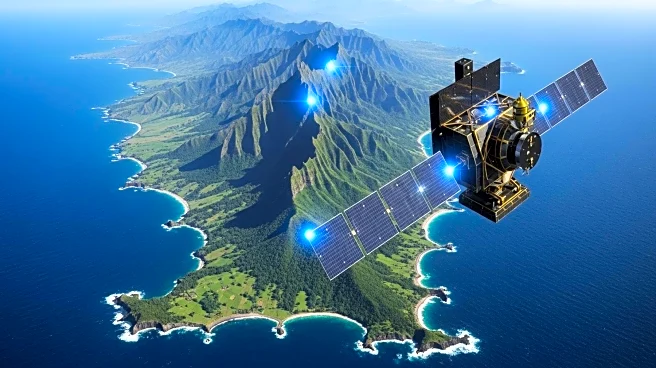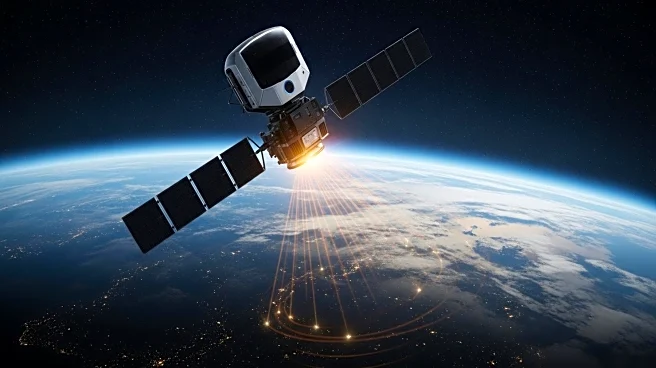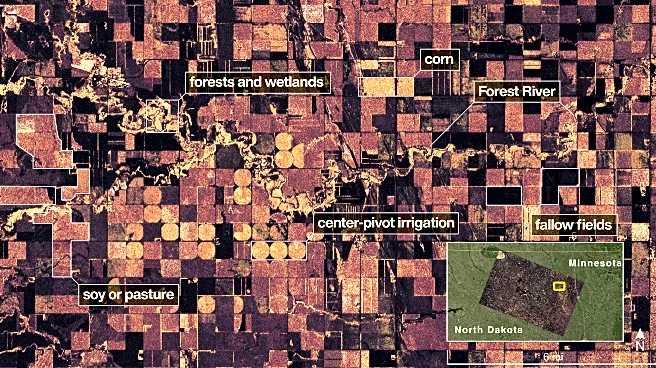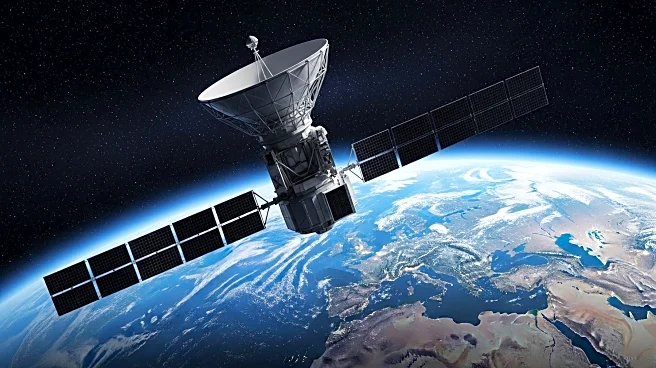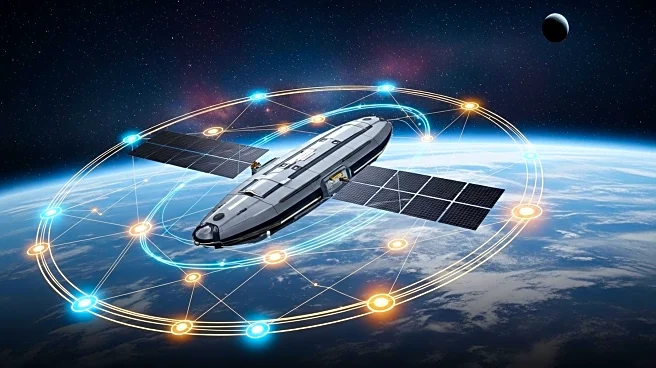What is the story about?
What's Happening?
NASA and the Indian Space Research Organisation (ISRO) have successfully launched the NISAR satellite, which has begun sending its first radar images of Earth's surface. This satellite is equipped with both L-band and S-band radars, making it the first of its kind. The L-band radar can penetrate forest canopies and measure soil moisture and ice surface motion, while the S-band radar is sensitive to small vegetation, aiding in agricultural monitoring. The satellite will monitor Earth's land and ice surfaces twice every 12 days, using a large drum-shaped antenna reflector. This mission represents a significant collaboration between the United States and India, with contributions from various ISRO centers and NASA's Jet Propulsion Laboratory.
Why It's Important?
The NISAR satellite's capabilities are crucial for environmental monitoring, providing detailed data on land cover, forest ecosystems, and agricultural progress. This information is vital for understanding and responding to natural disasters such as earthquakes, volcanic eruptions, and landslides. The collaboration between NASA and ISRO highlights the importance of international partnerships in advancing space technology and environmental science. The data collected by NISAR will equip scientists and decision-makers with the tools needed to address global environmental challenges, potentially influencing policy and conservation efforts worldwide.
What's Next?
The NISAR mission is set to begin its science phase in November, where it will continue to provide detailed radar images and data. As the satellite operates in its designated orbit, ongoing monitoring and data collection will enhance understanding of Earth's dynamic processes. The collaboration between NASA and ISRO is expected to continue, potentially leading to further joint missions and technological advancements. Stakeholders in environmental science and policy will likely utilize the data for research and decision-making, impacting global strategies for disaster response and ecosystem management.
Beyond the Headlines
The NISAR mission not only advances scientific understanding but also strengthens diplomatic ties between the United States and India. This partnership showcases the potential for international cooperation in addressing global challenges through technology. The mission's success may inspire similar collaborations, fostering a spirit of unity and shared goals in the scientific community. Additionally, the satellite's advanced radar systems could pave the way for future innovations in remote sensing and environmental monitoring.
AI Generated Content
Do you find this article useful?
